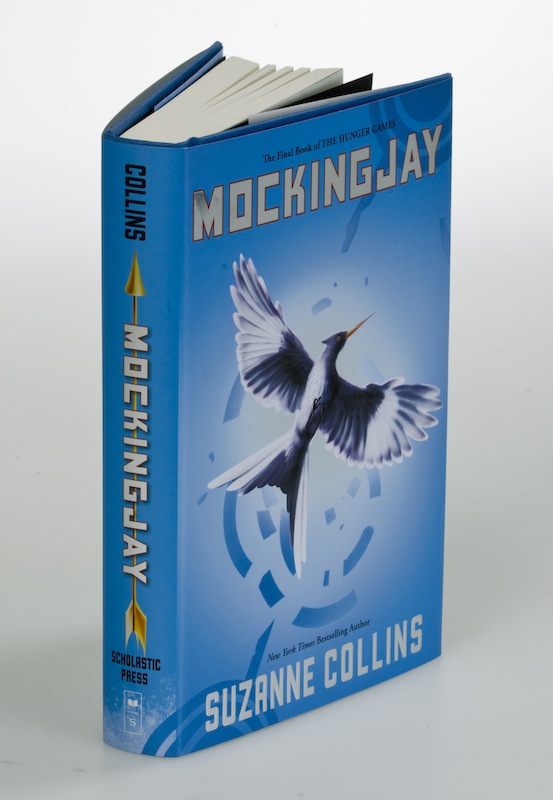
As the movie version of the last Hunger Games book, Mockingjay, Part 2, arrives in theaters Friday, the popularity of books and movies geared to young adults is a well-established phenomenon. Still, that wave of young-adult fiction is frequently seen as a cultural force for this generation—when in actuality the YA category is older than you’d expect.
Although there were 19th century books about and aimed at young readers—including Louisa May Alcott’s Little Women, Lewis Carroll’s Alice in Wonderland and Mark Twain’s The Adventures of Huckleberry Finn—it wasn’t until the mid-20th century that a separate category dedicated to the interests of teenagers emerged.
It was a librarian in New York City, Mabel Williams, who helped promote the idea, the New York Public Library notes. In 1929 she and her staff published their first “NYPL Books for Young People” list, which the NYPL has continued to publish annually. Today, they continue this list on their teen-focused blog and list of “Best Books for Teens.”
In 1944 Margaret Scoggin, another NYPL librarian, changed the title of her column for the Library Journal to “Books for Young Adults,” in one of the earliest uses of the term. The Young Adult Library Services Association was founded in 1957 as the Young Adult Services Division of the American Library Association. The YALSA has influenced publishing and library collections, encouraging the focus on books geared to adolescents.
In the following decade the term became more widely used, if sometimes derided. And S.E. Hinton’s The Outsiders (1967) is often cited as a key publication in the development of YA fiction. In a 1968 book review TIME was still skeptical of “that artificial category of literature known as ‘young adult novels.’” The review went on to question the basis of such categorization: “But to what worthwhile end? Surely today’s ‘young adults’ do not need such pallid dramatizations of their problems when Simon and Garfunkel and the Beatles do it so much better.”
The 1970s have been called “the first golden age” of YA, featuring books by Judy Blume (Are You There God? It’s Me, Margaret was published in 1970) and Robert Cormier (The Chocolate War was published in 1974). “Problem novels” dominated, dealing with a single dramatic issue—divorce, bullying, identity, drug abuse, poverty—at length.
These stories tended to devolve into formulaic constructions and though there were some exceptions, the category experienced a dip in popularity and publishing rates after that period.
Things soon turned around. In a 1999 article“Reads Like Teen Spirit,” TIME wrote about the new focus on books for teens, as booksellers created specific areas of stores and websites for them: “Teen fiction may, in fact,” the magazine noted, “be the first literary genre born of the Internet.” The exploration of literary form with multiple narrators, letters, shifting time periods as well as “stark themes, complex plot lines and ambiguous resolutions,” marked a movement beyond problem novels. By then TIME was more upbeat about the possibilities of the books: “Teen books may not be able to compete with the visuals of The Matrix, but they do provide a few hours of what teens may need most: time to think. And there’s nothing bleak about that.”
Suzanne Collins’ Hunger Games was published in 2008. The trilogy sold 50 million copies (print and digital) by 2012, when it surpassed Harry Potter—the first book of which came out just at the beginning of this most recent YA wave—as Amazon’s top-selling series.
But the category had some help getting to the top: Despite its name, over half of the young adult books purchased in 2012 were bought by adults 18-44.
Read more: The Real-Life Hunger Games: Meet the Ancient Women Who Lived Like Katniss
Read TIME’s first story about The Hunger Games, from 2009, here in the TIME Vault: Game On
More Must-Reads from TIME
- Cybersecurity Experts Are Sounding the Alarm on DOGE
- Meet the 2025 Women of the Year
- The Harsh Truth About Disability Inclusion
- Why Do More Young Adults Have Cancer?
- Colman Domingo Leads With Radical Love
- How to Get Better at Doing Things Alone
- Michelle Zauner Stares Down the Darkness
Contact us at letters@time.com